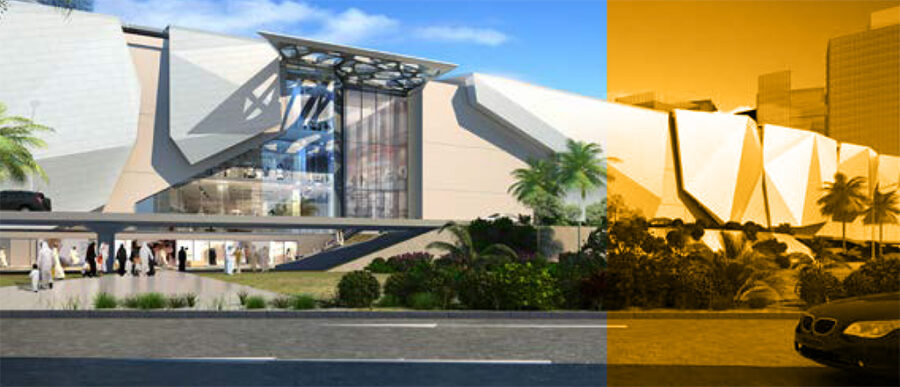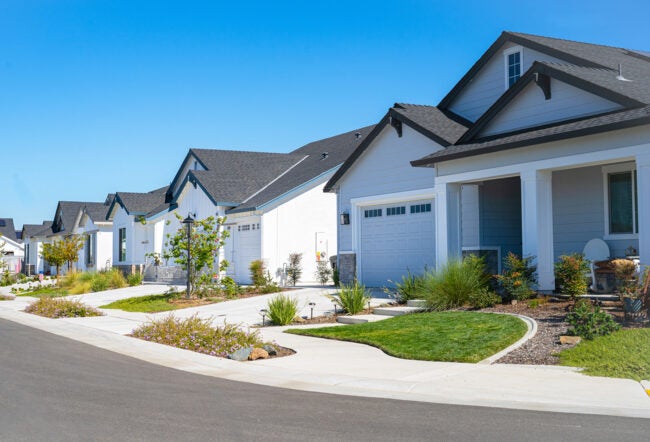After two decades of working in locations around the world, Samuel Dean Sidiqi knows the key to success in business is creating a strategy that is tailor-made for each locale. He employs that insight as CEO of the National Real Estate Company (NREC) of Kuwait, a real estate and investment firm that recently broke ground on the $1 billion Reem Mall project in the UAE — slated to be one of Abu Dhabi’s super-regional shopping centers.
Sidiqi will be a speaker at the WCA Executive Investment Summit & CEO Forum to be held in Ethiopia from March 15 to 16. He spoke with Knowledge at Wharton about his global perspective on commercial real estate, particularly in the Middle East and North Africa (MENA) region.
An edited transcript of the conversation appears below.
Knowledge at Wharton: Your company has begun to build the billion-dollar Reem Mall in Abu Dhabi. Tell us about that project and the reasons why NREC decided to pursue it.
Samuel Dean Sidiqi: Reem Mall is Abu Dhabi’s major new retail, leisure, dining and entertainment destination. It is expected to launch in 2018. The Reem Mall project will comprise some 450 stores, including 85 F&B [food and beverage] outlets and a range of family-focused entertainment offerings including the world’s largest indoor snow-play park.
The United Arab Emirates is a strong and safe market. When you look at the gross domestic product per capita of the UAE, specifically [of its capital] Abu Dhabi, we have a really nice market for retailers. Abu Dhabi is also growing its tourism business not just for the Middle East traveler but for a much larger region, including parts of South Asia, Central Asia and Africa as a hub.
Abu Dhabi is really strong in terms of GDP per capita — with a stable oil base and a lot of investment by the government in diversification — and we see incredible demand for a high quality mall in Abu Dhabi. What we’re bringing is a next-generation mall, where it’s not just about providing a retail environment. You’re providing the full-day out experience for families — that’s not just fashion, but entertainment, food, services and everyday needs such as groceries. It’s something for everybody in the family under one roof, and you can do that when you have 190,000 square meters of gross leasable area [or 2 million square feet] and invest in creating friendly spaces and putting in everything the family needs.
“If you’re making an Apple iPhone, that device can pretty much go around the world with minor tweaks. It’s for consumers everywhere. Real estate is very, very local.”
Knowledge at Wharton: Malls in the United States and some other parts of the world are in trouble because of the rapid rise of online retail. To what extent does this risk exist for malls in the Middle East?
Sidiqi: In the U.S., you have high rates of mall space per capita, and if you compare that with the Middle East, there’s still a big gap. So, there’s a lot of room before you get to the same rates of mall space per capita in the Middle East and Africa versus the U.S.
Ultimately, people still need a town center where they’re going to gather. I think a lot of retail space probably needs to be repurposed. There’s always a need to reimagine space and how people use it, but I don’t see that as an immediate problem for the Middle East because the mall space per capita is so much lower. I think it’s fair to say that in the U.S. there’s a bit too much mall space today considering some retail needs can be met by online shopping. But the Middle East and Africa, I think, are fine.
Knowledge at Wharton: You will be speaking at the Africa executive summit in Ethiopia in March. Based on your experience in Africa — NREC is already working in Egypt — what are some of the major opportunities you see?
Sidiqi: NREC is focused purely on real estate, and what we see is that you have large populations that are underserved. If there’s a demand for either housing or secondary housing or tourist housing, those needs have to be met at some point. There will be demand. You look at the population of Egypt with 90 million people — that to us is a massive opportunity where there hasn’t been enough capital and expertise focused on creating the [real estate] asset class.
Beyond just the end-user demand, there is also the need to create investment products for people that might experience problems with the currency. If you are a middle-class family, how do you hedge currency risk? One way to do that is to invest in real estate assets. It’s not always the most liquid asset but it is accessible to a person who can’t necessarily have their money abroad in Switzerland. You create not just houses for people who demand them, you’re also creating financial asset classes for people to deal with currency swings that they might not be able to manage otherwise.
Knowledge at Wharton: Which regions of Africa and what product types do you think are most promising for NREC?
Sidiqi: We’re focused just on North Africa at this point, which has mostly Arabic-speaking countries. Coming out of Kuwait, we have Arabic as one of our core competencies, so we feel we can operate in these environments. We’re focused today mostly on Egypt as a growth environment. Historically, we also have an investment in Libya that has performed well for us in the past, but we’re waiting for the new unity government to stabilize before we would consider that a growth market for us.
Knowledge at Wharton: Considering your expertise in retail construction in the UAE, do you see a market for luxury retail in Africa?
Sidiqi: I haven’t personally looked too much at luxury retail in Africa. My understanding today is that a lot of that luxury retail is siphoned off either to Dubai or Europe but I don’t have the specific expertise to comment further on luxury retail in Africa.
Knowledge at Wharton: You talked about some of the opportunities in the North Africa region. What are the principal risks you see, and what is your plan to hedge those risks for NREC?
Sidiqi: You always have currency risks. And then there are repatriation risks. Does the country change the regulations and procedures that either allow you or prevent you from repatriating? For that, I think you need to have a longer-term view. You need to either plan your investment so that you can get your money out right away, or you have to be comfortable that your return might come out a little more slowly over time.
“If you’re trying to manage political risks, it’s thinking through what institutions in that country are going to be around and being aligned with those, rather than … an individual.”
The other risk is of the currency fluctuating. You have to be careful how quickly you sell your assets. With real estate, especially in Egypt, it tends to be a natural hedge against the currency. If the Egyptian pound is going down, the value of your assets in Egyptian pounds is going up, not quite in direct dollar terms but close. What you don’t want to do is sell all of your assets right away too quickly, right before there’s going to be a currency change. You need sometimes to manage your product a little carefully so that you aren’t on the wrong side of a currency change.
Knowledge at Wharton: Do you see any political risks as well?
Sidiqi: I think across Africa, you do see political risks. One of the things that I learned at Wharton from Witold Henisz’s Political Economy class is how to approach managing networks and relationships in difficult to navigate economies. If you go in as a foreign investor and let’s say it’s maybe not the most transparent economy, a lot of people want to depend on a person who has connections and then use those connections. If you rely on a person to give you connections, that person can change, and then you might be relying on something that can disappear overnight.
An alternative is to develop a relationship with an institution that may appear to be less helpful in the short run, but can be better for managing long-term risks. You saw a lot of people in Libya who were working there based on their relationship with the family (of former Libyan leader Muammar) Gadhafi. So when [the political situation of] Gadhafi changed, many of them struggled quite a lot. What I’ve seen be successful for some of our companies is that you don’t [bank on] your relationship with an individual, you put it with an institution that’s going to be there.
That’s how we operated in Libya, so when the regime changed, we weren’t seen as a bad player because we weren’t close to Gadhafi. We were aligned with institutions within the Libyan government, so that was okay. If you’re trying to manage political risks, it’s thinking through what institutions in that country are going to be around and being aligned with those, rather than trying to be aligned with an individual.
Knowledge at Wharton: Beyond North Africa, what is NREC’s broader Africa strategy and how does it compare with that of other real estate developers who are active on the continent?
Sidiqi: I think real estate is a little different from other products. If you’re making an Apple iPhone, that can pretty much go around the world with minor tweaks. It’s for consumers everywhere. Real estate is very, very local, so even some of the largest real estate companies in the world might only be in 40 countries and they have $80 billion of assets.
For NREC, our Africa strategy is focused on Egypt and Libya at this point. There’s certainly scope for a lot of different real estate players to do different things in Africa. But when you’re trying to think about real estate, you have to understand that each project has a lot of dimensions. You’re dealing not just with the end-consumer; you’re dealing with investors, governments and communities, so you can’t just have a one-size-fits-all approach. It’s very specific to those local demands and relationships, otherwise you can find a very large project [snagged] and slowed by a very small detail that you couldn’t know [about] unless you spent a lot of time in the market.
I would recommend that anybody who is thinking about a real estate strategy shouldn’t be focused on more than just a few markets. And if you’re doing more than two markets, it should only be in one region of Africa because each region is so different.
“When the world changes, you have to change with it and not sit around hoping things are going to get better for you.”
Knowledge at Wharton: Where do you see NREC’s Africa operations going in the next three to five years?
Sidiqi: When we’re thinking about the opportunity for NREC in Africa, it’s again focused on Egypt because that’s a market we’ve already entered, so we know the rules and we know how to operate there. We have a local team with local intelligence so we operate there in a very Egyptian way.
One of the opportunities we see is the Mediterranean coastline. The Mediterranean is this amazing destination in southern Europe. You have Portofino, you have the Cote d’Azur — you think of these really iconic locations either in Spain, Italy or France. Well, that same Mediterranean is there on the North Coast of Egypt.
Sometimes when people think about beach destinations in developing countries, they’re working on the assumption that it’s a foreign tourist destination. They assume that it is best to try and bring in Americans or Europeans to pay back their investment. But, what we see in Egypt, especially for the North Coast, is local demand for secondary housing. The French Mediterranean wasn’t just for foreign tourists. When the middle-class economy started to grow in France, you had that middle class demand drive development of these beachside towns for summer vacations.
Egypt has seen growing demand for secondary housing, not just among the rich but among even the upper middle class. It’s not just because it’s a summer house, but it also meets the needs for [hedging] currency risks. An Egyptian family has that social need and that currency need, so then they go and buy that secondary house for their kids to spend the summer on the North Coast. We see that as a very interesting product opportunity in Egypt.
Knowledge at Wharton: You joined NREC in 2012 as the CEO. Could you tell us about your career before that?
Sidiqi: Before joining NREC, I spent eight years with Agility Logistics, which is a Kuwait-headquartered company with a global presence. I worked for Agility across Kuwait, the U.S., Europe and South Asia. Previous to Agility, I was at Wharton as well as at the Lauder Institute at Penn. Before my MBA, I worked for two years in consulting with Bain & Co. in Boston.
Knowledge at Wharton: What is the biggest leadership challenge you have ever faced? What did you learn from that experience?
Sidiqi: The biggest leadership challenge I faced was when I had built up an operation in Afghanistan to pursue mostly U.S. government and NATO business opportunities. There was a contract dispute, which meant that I couldn’t pursue new business with those organizations anymore. The challenge was to deal with that opportunity and say, “How do we change from being a foreign government contract-focused company to being a company that can do business here in Afghanistan?” We had to change our personnel profile. We went from having an expat staff to a 95% Afghan staff and then finally a 100% Afghan staff. Instead of just thinking about large contracts with large overheads, we focused on Afghan government contracts and aligned ourselves to our new environment.
What I learned is that when change happens, it’s important to act quickly. Waiting around isn’t going to make things better. When the world changes, you have to change with it and not sit around hoping things are going to get better for you.
Knowledge at Wharton: How do you define success?
Sidiqi: I think success is achieving your goals. If your goal is to generate returns for your shareholders, then you make that your goal and success is achieving that. Personally, I have a mix of family, work and community goals that I want to accomplish. So, that will define my personal success, but each person has to define their own goals and they can be very different from your business school peers.



